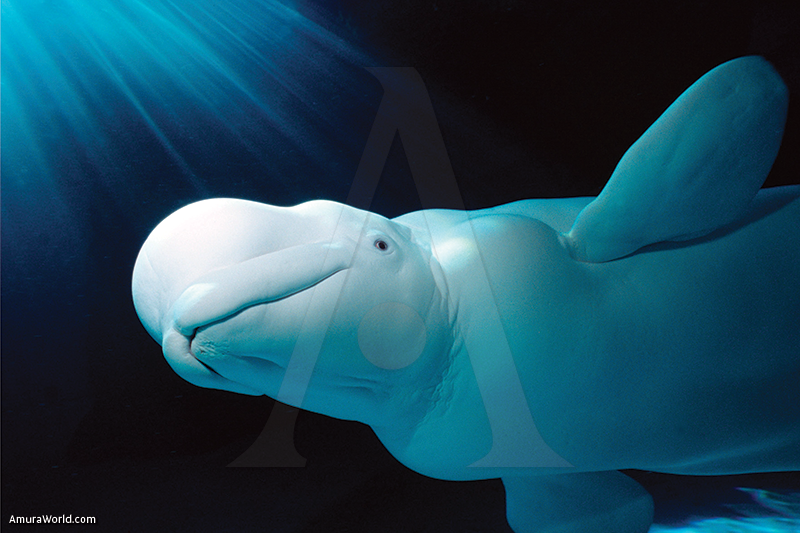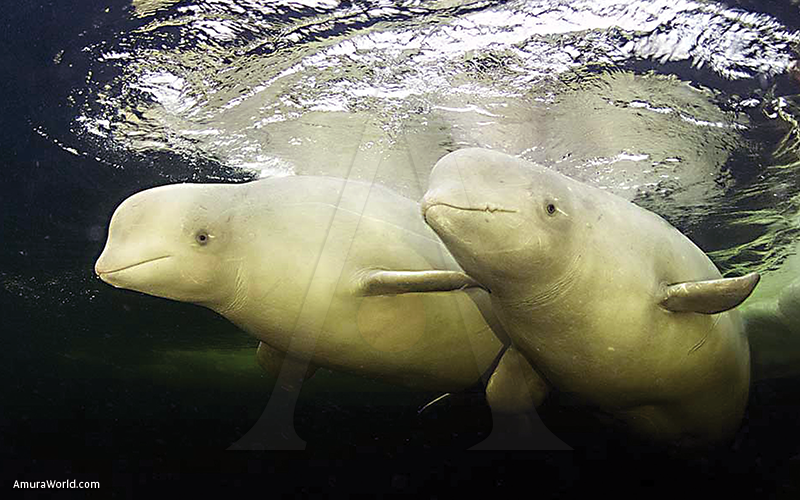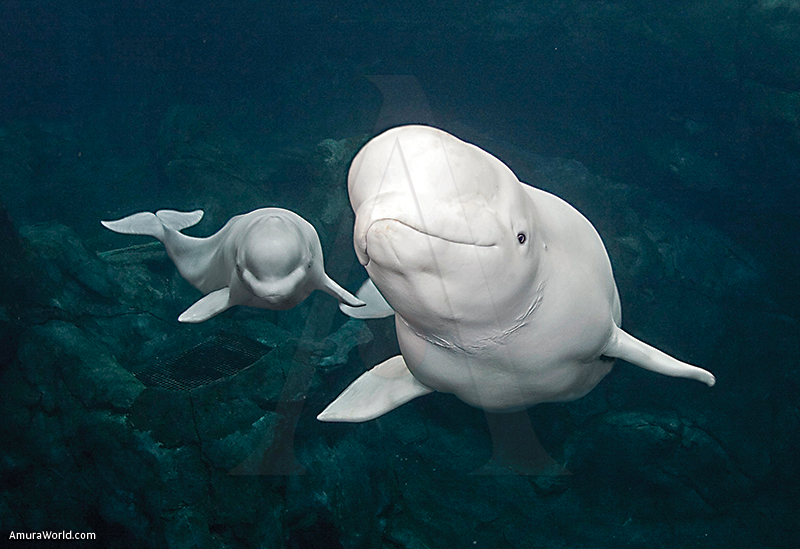The beauties of the artic circle
Available information dates back to the mid-20th century and it mainly sheds light on commercial whaling. Russian scientists get fragmentary information from the studies of their foreign colleagues, mainly from Norway, the United States and Canada.
There are no data on how the animals’ migration routes and main places of congregation have changed following climate changes, such as ice melting, changes in the flow regime of northern rivers, changes in Arctic sea hydrology and the resulting changes in fish migration routes. There are no data on the impact of man-made factors on the biota and marine mammals.
Knowing the facts
A lack of data becomes a serious obstacle for Russia when it needs to provide scientific arguments to uphold its position on the issue of efficient nature management, first of all, in its relationships with various organizations, as well as relationships under international agreements (International Whaling Commission (IWC), International Council for the Exploration of the Sea/Northwest Atlantic Fisheries Organisation (ICES/NAFO), Mixed Russian-Norwegian Fishery Commission, agreements with the U.S., etc.).
In 2005 and 2006, the United States, for example, made an estimate of the total population of marine mammals in its waters. Norway and Japan also take an active part in studying and monitoring marine mammals and not only in their respective water areas.
In the last 10 years the above countries have repeatedly approached Russia with requests to allow their vessels to conduct such research in the Russian Exclusive Economic Zone. In many cases appropriate authorizations were issued and research conducted, that has led to a bizarre situation when foreign experts appear to be better informed about the current distribution range and the number of marine mammals living in our waters than their Russian colleagues.
A special “Pan-Arctic Tracking of Belugas” (PATOB) programme had been developed in time for the International Polar Year (2007 and 2008), under which Russian scientists are expected to answer many questions on white whale populations in Russia, which account for a considerable share of white whale populations worldwide.
Research into white whale migrations is essential for understanding the reasons behind changes in white whale numbers within one region, as well as for getting a better idea of relationships between various populations of the mammal living in one sea and between populations inhabiting various seas.
Norway’s Defence Ministry, for example, provides funding for zoological research of white whale migrations in the Barents Sea and the White Sea based on satellite-tracked radio tagging.
Hands on
Radio tags complete with tracking sensors supply unique oceanographic data, such as temperatures, salinity, current direction, etc. Such information can be obtained for unique and hard-of-access locations, with considerable funds being saved.
Neither the issues of hunting for white whales for whatever purposes (be it commercial whaling or live-capturing of animals for display at aquariums, etc.) can be resolved without doing research on their abundance, migration patterns, health, as well as toxicological data.
The current number of white whales is only known for the White Sea, the first location where white whale hunting began in the 9th or 10th century.
Scientific research on the White Sea beluga whale began almost one hundred years ago and was largely focused on determining their abundance (tracking the white whale populations from the coast, ships and the air).
The main objective of the above research was to estimate the abundance of white whales for their subsequent industrial use.
Mostly large migrating herds of white whales could be tracked using traditional methods of tracking the animal from sea vessels and aircraft. Such methods did not allow researchers to gain a detailed understanding of the life of white whales and adequately estimate their numbers.
Various methodologies for estimating the condition of White Sea beluga whale populations had been developed and applied, however, due to the incompatibility of methods, different timing of research and inconsistent approaches it proved practically impossible to either make an objective estimate of the total number of beluga whales in the White Sea, or monitor changes in their numbers, or come up with general conclusions.
Observations of white whale migrations in the 1930s from fixed coastal stations on the White Sea coast and along the straits linking the Barents and the Kara Seas put the number of white whales at 6,000 to 8,000 during the summer season. Later a number of researchers (G. Matishov, G. Ognetov in 2006; Kleinenberg et al. in 1960, 1964, 1964) counted animals from coastal observation points and analysed their findings. The analyses showed that the total number of white whales ranged between several hundreds and several thousands depending on the year, season and the observation point.
Meeting with the challenges
There are two reasons why it is extremely difficult to compare all the results of such research with the aim of identifying the number of beluga whales or dynamics in their numbers: first, beluga whales travel a lot, covering long distances and, second, researchers made observations at various observation points for variable periods of time, and frequently their work took more than one month to complete. When the number of white whales is tracked from fixed coastal points, it cannot be ruled out that the same mammals are counted twice, that renders findings obtained using such method less accurate.
In the 1970s, apart from coastal surveys, aircraft and sea vessels were more widely used for sea research purposes. Specialized tracking of the cetacean population from vessels is a complicated and costly effort therefore tracking of the white whale population in the White Sea from vessels was often conducted in conjunction with ichthyological, hydrobiological and other research.
The latest and the most effective research was conducted using aircraft, but the timing, observation areas and tracking lines were so different that it is impossible to track changes in the processes being studied and compare them.
In June and July 1957, Vsevolod Belkovich used aerial population surveys to demonstrate the specifics of white whale distribution ranges in the White, Kara and Barents Seas, as well as the groups’ sex and age structure. In July to September 1967, Yu. Timoshenko, conducted aerial surveys of white whale distribution ranges in the White, Kara and Barents Seas, spotting groups from 25 to 1,000 in various places. In December 1960, Yu. Nazarenko studied white whale winter distribution ranges in the White Sea and in the eastern part of the Barents Sea, detecting visually about 2,000 along the eastern coast of Kolguyev Island.
The first aerial population survey methodology was developed in the late 1970s (G. Matishov, G. Ognetov, 2006). Based on this methodology, in the period from 1971 to 1980 the white whale population in the White Sea was estimated to be from 232 to 1,570.
Due to the animals’ high mobility, as well as seasonal, yearly and daily changes in their range, attempts to estimate the size of the white whale population in the White Sea are plagued with problems, that is evidenced by differences in the findings and difficulty researchers have drawing general conclusions.
An unexpected outcome
In the last few years uniform white whale surveys have got started in the White Sea in the period when the number of belugas there is at its peak (Glazov et al., 2006; Glazov et al., 2007). The research conducted provided appropriate monitoring data and served as a platform for drafting methodological recommendations for conducting aerial white whale population surveys according to a single plan.
A methodological approach, a new one for the Arctic where the white whale is seen as the Arctic ecosystem indicator species, has been developed and implemented (Glazov et al., 2006): it draws on the vast international experience in recording populations of the cetaceans and takes into account climate changes which have been occurring in the Arctic in the last years. In 2005 to 2007 this method was used to track the number of beluga whales in the White Sea and identify their ranges there (Glazov et al., 2006; Glazov et al., 2007). The results of special electronic aerial survey data processing showed that in the summer months the white whale population varied between 5,500 and 7,500, much more than previously believed.
Efforts to assess white whale populations in the Barents and Kara Seas, and the Far East have long since been aborted and current white whale numbers there are unknown.
Text: Russian Academy of Science through the Whale Program ± Photo: BROAD VAST/ JOANNA VALE/ SHEDD/ STOV/ RAFAEL MATEO/ R. STOV






